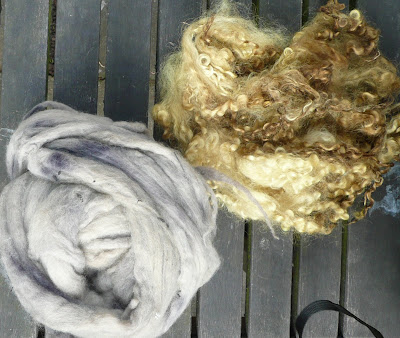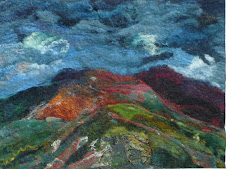Top is the baptisia I mentioned in the last post which has come out a dark yellowy gold. "A Renaissance colour" says Enys approvingly. The Lythrum Salicaria produced the very black dye bath with a teaspoon of iron. Alas! Alas! It washed out of the fibre and gave the grey you can see in the picture in the top photo.
Soup a la Julienne
-
This is a vegetable soup which is quick to make up and surprisingly
delicious. It could easily be served with fried snippets, or bread
triangles fried ...
1 week ago






























it shows that getting a true black is extremely difficult:(( I haven't managed so far, all I got was a dark grey..... there are so many plants that are supposed to dye black (roots mostly), but none of them worked for me up to now! I read that roots of gunnera tinctoria give black - but I only have the one plant in a big drum and I have to wait until this is ready for dividing and replanting! if I lived closer to Achill Island in the west - I could probably dig out tons of the stuff, as everybody is keen to get rid of the "giant rhubarb" that takes over the boggy areas...
ReplyDeleteLast year I got a black from eucalyptus leaves. This year I got a rather lovely dark reddish brown. I think black is the hardest colour to get and so far none of the ones that should give it have. :(
ReplyDeleteI bet the Gunnera root from boggy areas would give black with iron. It is not a plant I ahve, Enys for some reason takes violently against rhubarb!
why is that? the gunnera is not a plant in the rhubarb genus, it comes from south america originally (like the fuchsia that grows so abundantly around here) - it's a relative of the gigantic plant that you often see close to lakes and ponds nowadays! not quite as large, but with beautiful if rather spiky leaves and huge flowering cones that turn orange-red at that time of the year. the one negative thing though: in boggy soil it can run rampant very easily.... but that would be good for dyers who need the root?:))
ReplyDeleteWell I am not sure! It is probably on the grounds of space. However I do have a boggy area so might try some gunnera there
ReplyDelete